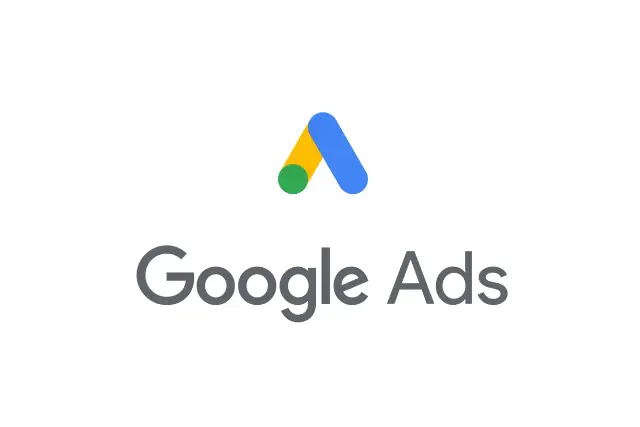Google Ads Management Tips to Maximize Your ROI
Google Ads are a great option for businesses looking to reach their target audience and drive conversions. However, without a well thought out strategy and proper execution a lot can go wrong. This includes wasted budget, poor results, and perhaps most importantly, lost time.
As somebody who has managed Google Ads for a variety of businesses in different verticals, I have seen a fair amount of the good, the bad, and everything in between. And while nothing is guaranteed, there are some basic tips that will help set you up for success.
So let’s take a look at tips to help you maximize your Google Ads return on investment.
What are Google Ads?
Google Ads, formerly known as Adwords, is an online advertising platform developed by Google. It allows businesses to advertise to users based on specific queries they type into Google and a number of other demographic and intent based signals. These advertisements are then displayed on Google’s search engine results pages and across the Google Display Network.
For example, here is a screenshot of a Google search engine results page for the query “pharmacy delivery”. We can see an ad for Amazon Pharmacy which appears with a “Sponsored” tag alongside other organic (nonpaid) search results. Businesses only pay a fee to Google when a user clicks on their ad, which is why this type of advertising is sometimes referred to as pay per click or PPC advertising.
Google Ads offers various formats across their ad inventory including text ads (displayed above), display ads, video ads, and more.
How Much Do Google Ads Cost?
At a high level, you decide how much your Google Ads cost because you can set a daily limit for your ad spend. In other words, if you only want to spend $10/day then you set your limit and Google will not exceed that.
However, the cost of each click will vary depending on a variety of factors that include the bid amount you set, the quality of your ad, the competition of your targeting parameters (keywords, audience, etc.), and the type of asset (text, video, image). These are all then weighted by Google to form a score called Ad Rank which determines whether an ad is shown for a given user and in what position it is shown.
If two ads competing for the same position have similar ad ranks, each has a similar opportunity to win that position. However, as the gap in Ad Rank between two advertisers’ ads grows, the higher-ranking ad is more likely to win, but it may also pay a higher cost-per-click (CPC) for the benefit of the increased certainty of winning.
You can learn more about Ad Rank here.
What Is The Advantage of Google Ads?
In general, the biggest advantage of Google Ads and search engine marketing is active intent. Simply put, active intent just means that the people who see your advertisement are actively expressing an interest or intention in a particular product, service, or topic. For example, if a user searches on Google for “online meal prep services” then they would see advertisements for online meal prep services. Understanding active intent is crucial for advertisers because it generally signifies a higher likelihood of conversion.
Conversely, platforms like social media (Meta, TikTok, Snap, etc.) mostly rely on passive intent. In other words, these platforms try to infer what a user’s intention or interest might be and then show them related advertisements. For example, a user that follows a page for watch lovers on Facebook and then sees an advertisement for watches while they are scrolling on Instagram. The advertisement was the result of inference or what the platform knows about you.
While this is an overly simplistic example, the point is clear. Active intent is based on direct action from a user (an explicit query, etc.) while passive intent is based on inference or what a platform knows about you.
Google Ads Tips to Maximize Your Return on Investment
Google Ads are a great option for businesses of all sizes to reach their target audience. Here are 5 simple tips to help you get set up and maximize your Google Ads return on investment.
Tip #1 – Spend Time Researching and Choosing the Right Keywords
One of the most important components of any Google Ads campaign is keyword research. In other words, deciding which user searches you want to target with your advertisement. In general, there are 3 main considerations I use when deciding which keywords to target at the beginning.
- What would users search to find my product or service?
- Which of these searches has enough volume?
- Which of these searches indicates buying intent?
To get started, we ideally want around 10-20 broad match keywords with enough search volume and buying intent. Then, once we start getting some campaign data, we can optimize based on what we’re seeing.
Tip #2 – Make Conversion Goals Easy but Meaningful
This may seem obvious but to get the best results from Google Ads it should be easy for your users to convert. Generally, this means having a simple landing page with a clear call to action that moves your user toward the conversion goal.
However, in addition to the conversion goal being easy, it should also be meaningful. In other words, the goal should be something that will drive a key metric and impact your bottom line. For example, this could be a phone call, demo request, online purchase, or anything that will move the needle for your business.
Tip #3 – Use Automated Bidding
I am firmly in the camp that everybody should be using automated bidding. This means utilizing Google’s AI to set bids for your ads based on that ad’s likelihood to result in a click or conversion. To set the right bid, Google’s Smart Bidding uses predictive AI which learns from billions of combinations of signals, like time of day or device type, to automatically set unique bids for every search query.
Using Smart Bidding allows advertisers to set bids based on each user’s context in the moment, which is something that can’t be accomplished manually. Simply put, automated bidding is the only way to account for all available signals and improve performance.
Tip #4 – Don’t Make Frequent or Large Changes
The single biggest mistake I see made with Google Ads is making changes too frequently or making large scale changes too quickly. However, what is too frequent or a large scale change? While some of this is your feel for an individual account, here is a good guideline in my experience.
If you are spending under $500/day on a campaign, then you probably shouldn’t be making changes more than 1-2 times per week at most. Furthermore, when you do make changes, they should be small and iterative so you can measure the impact. For example, adding negative keywords, switching an ad in and out, or adding additional keywords. If you try to do many of these at once it becomes hard to track the real impact each change had.
Caveat: this doesn’t mean that you shouldn’t be looking in the account every day to understand what is happening. Look at the search term reports to see what actual search terms are driving conversions and what negative keywords you might want to add. Understand what queries are most expensive and not leading to conversions or an acceptable acquisition cost. Dig around in your top ad asset details to see which headlines are performing best.
The better you understand the account, the more impactful your small changes will be.
Are Google Ads Worth It?
In my opinion Google Ads are absolutely worth it – at least to test. They offer a way to capture potential customers who are actively searching for the product or service you offer with any budget. Furthermore, they allow you a quick an easy way to test out different ad copy and headlines to see what resonates.
However, whether Google Ads will be a good channel for your business long term depends on a lot of things. For example, your customer lifetime value, the cost of acquisition through Google, the opportunity cost of other channels, etc. For some businesses, the numbers just don’t make sense and that is completely fine.
But overall, like most things in marketing, it is worth testing to see what you can learn.
If you have questions or would like to have a free 1 on 1 consultation, visit our contact us page and tell me a little bit about your business. For more marketing tips and tricks, subscribe below to my monthly newsletter where I send out the best resources and articles I come across each month.




